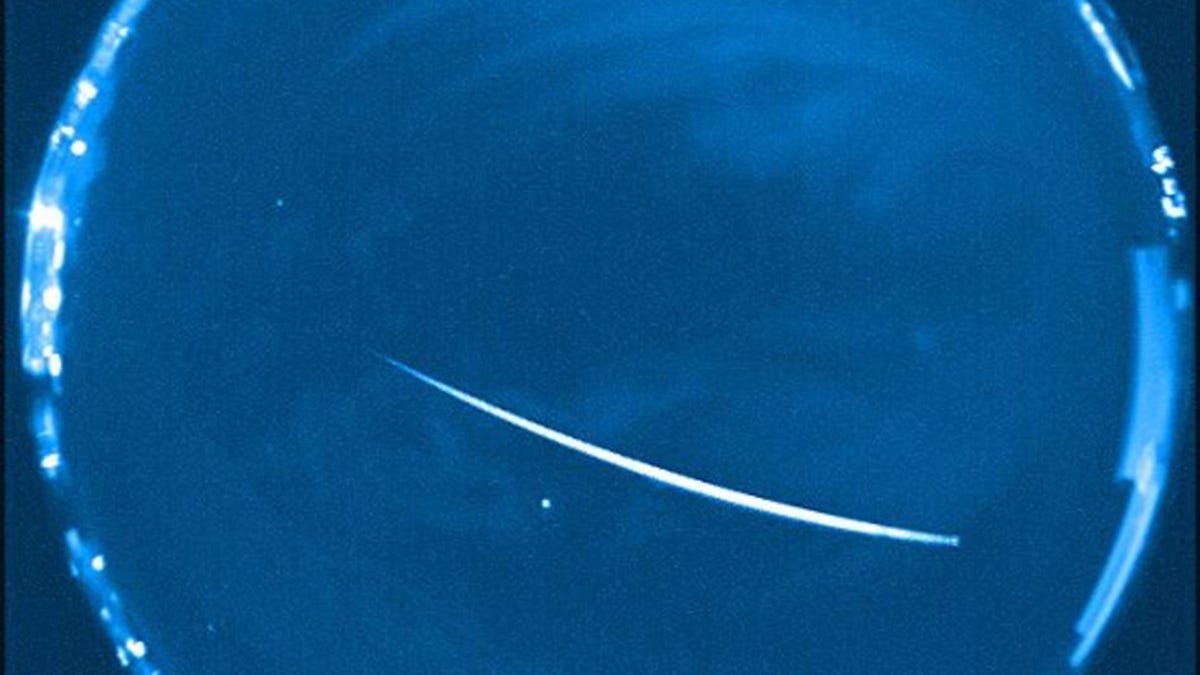Geminid meteor shower still visible through the weekend: How to see it
Even after its peak, plenty of shooting stars can be seen per hour with the right conditions.

A Geminid meteor caught in its final, flaming moments.
The 2020 Geminid meteor shower is officially past its peak, but the show remains active through the weekend with plenty of potential for spotting a shooting star or two or 10.
The official peak of the Geminids came Sunday night into early Monday. It definitely delivered plenty of shooting stars and a few bright, slow fireballs from my frigid, dark-sky location in the Sangre de Cristo mountains in New Mexico. But with just a sliver of the moon visible much of this week, there should still be some meteor activity to see.
I've seen around 16 🌠🌠 #Geminids2020 #Meteorshower #GeminidsMeteorShower pic.twitter.com/bIbdPr8LfM
— கோகுலன் (@tamil__gokul) December 13, 2020
The Perseid meteor shower gets lots of attention because it's active during warm summer nights in the Northern Hemisphere, but the Geminids are actually the strongest most years.
Even better, this is one of the few major meteor showers that doesn't demand you wake up well before dawn to catch the best part. According to the American Meteor Society, the Geminids provide "good activity prior to midnight as the constellation of Gemini is well placed from 22:00 onward."
This simply means the celestial region the meteors will appear to emanate from is placed high in the sky early in the night. It will be at its highest around 2 a.m. local time, but heading out before midnight still gives you a good chance to see plenty. Plus, those hours are the best time to see bright, slow-moving "Earth grazers" along the horizon.
"I like to face due south and have the radiant drift westward through my field of view. This also allows me to monitor the minor showers that are active in the same region of the sky," says Robert Lunsford from the American Meteor Society.
Bottom line: There's no real bad time to look for Geminids. Also, you don't need to stare at Gemini to spot Geminids. The meteors can appear just about anywhere in the night sky, but will typically be moving away from Gemini.
If you can manage that, all you need to do is dress appropriately, lay back, let your eyes adjust, relax and watch. The Geminids can range from faint, fleeting "shooting stars" to bright, intensely colored streaks and maybe even a fireball here and there. You'll have better odds spotting meteors in the Northern Hemisphere, but the Geminids are also visible south of the equator, just later in the night and in fewer numbers.
We get meteor showers when the Earth drifts through clouds of debris, typically left behind by visiting comets. In the case of the Geminids, the debris comes from the so-called "rock comet" 3200 Phaethon, which is thought to be a potentially extinct comet that wanders around the inner solar system.

